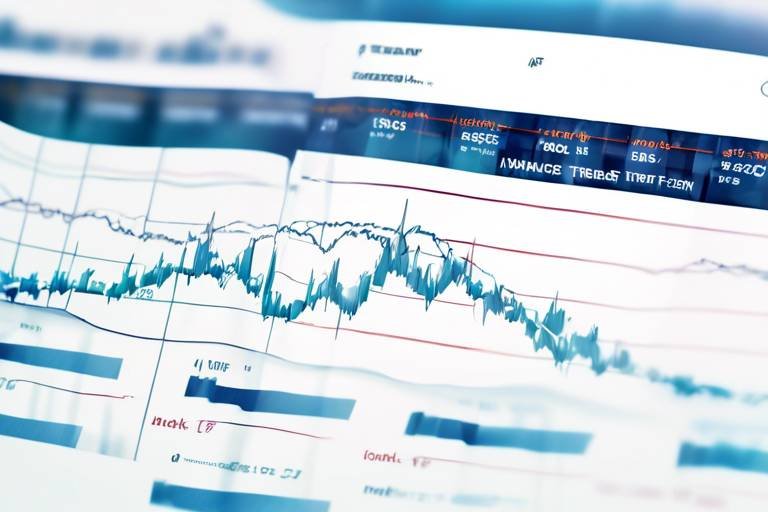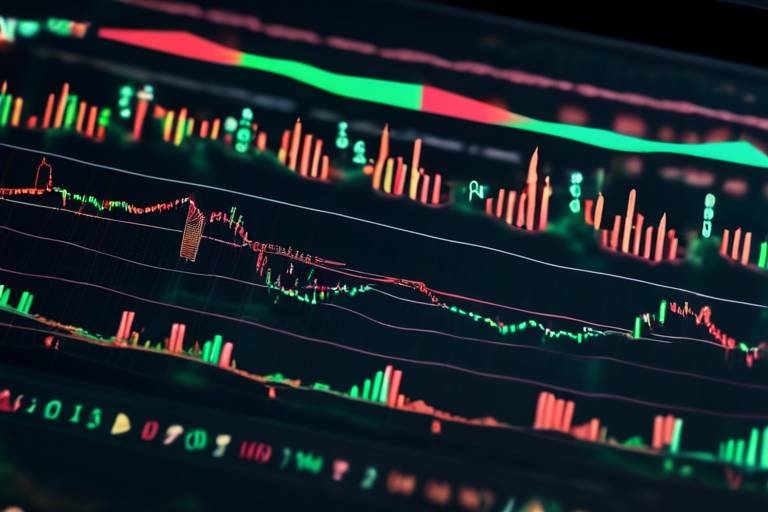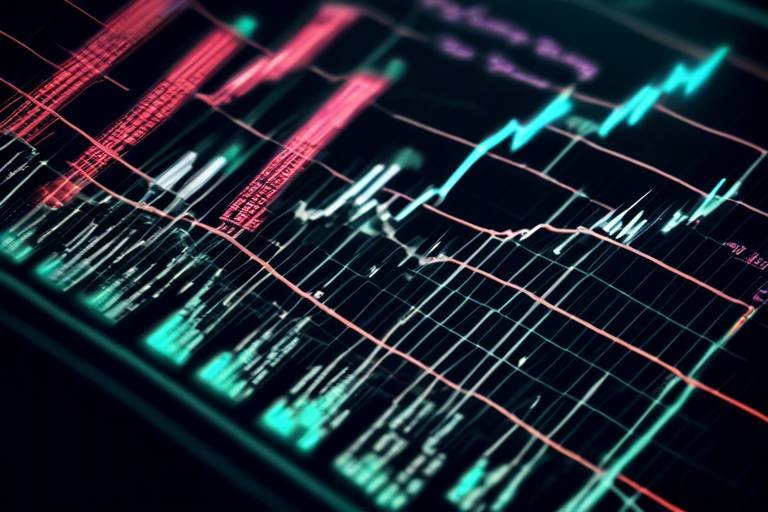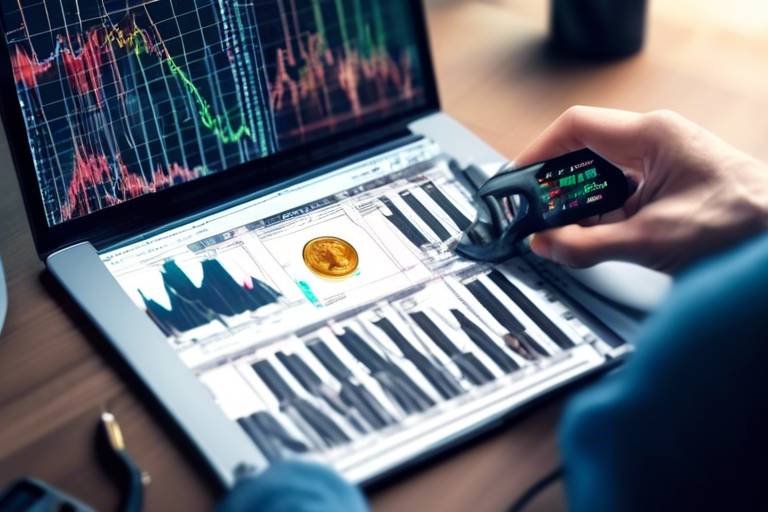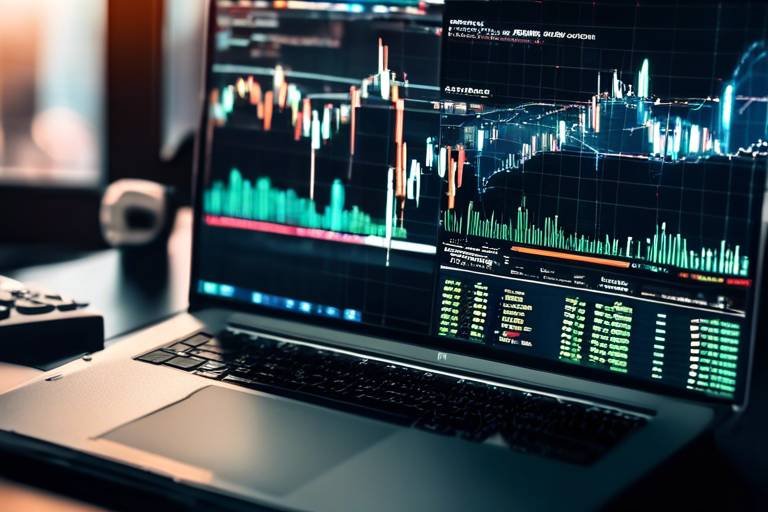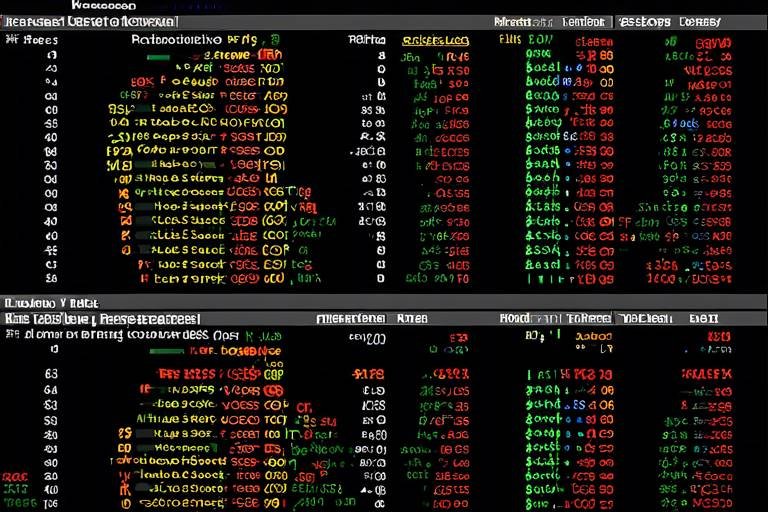The Importance of Backtesting in Trading Strategy Development
In the fast-paced world of trading, where every decision can lead to significant gains or losses, the importance of backtesting cannot be overstated. Backtesting serves as a crucial tool for traders, allowing them to refine their strategies and assess their potential effectiveness before committing real capital. Imagine trying to navigate a complex maze without a map; that’s what trading without backtesting feels like. By simulating trades using historical data, traders can gain invaluable insights into how their strategies would have performed in various market conditions.
Think of backtesting as a rehearsal for a play. Just as actors practice their lines and movements to ensure a flawless performance, traders must test their strategies against past market data to identify strengths and weaknesses. This process not only enhances decision-making but also builds confidence. When traders know that their strategies have been validated through rigorous testing, they are more likely to stick to their plans, even when the market becomes volatile.
Moreover, the significance of backtesting extends beyond mere performance evaluation. It acts as a foundation for risk management, helping traders understand potential drawdowns and losses. This understanding is akin to a safety net; it cushions the fall when things don’t go as planned. By analyzing historical performance, traders can develop robust risk management techniques, ensuring that they are prepared for the unexpected.
In addition to risk management, backtesting allows traders to optimize their strategies. By adjusting parameters based on past performance, they can create more effective trading approaches. This iterative process is essential for adapting to ever-changing market dynamics. Just like a chef perfecting a recipe, traders can tweak their strategies, discarding what doesn’t work and enhancing what does. Ultimately, backtesting is not just about looking back; it’s about paving the way for future success in the financial markets.
- What is backtesting? Backtesting is the process of testing a trading strategy using historical data to evaluate its potential effectiveness.
- Why is backtesting important? It helps traders assess performance, manage risks, and optimize strategies before risking real capital.
- What are common mistakes in backtesting? Common mistakes include overfitting strategies to historical data and ignoring transaction costs.
- How can I integrate backtesting with live trading? Transitioning requires understanding the differences between historical data and real market conditions for successful implementation.

Understanding Backtesting
Backtesting is an essential component of developing a successful trading strategy. It involves the meticulous process of testing a trading strategy using historical data to simulate how that strategy would have performed in the past. Imagine trying to navigate a maze without knowing the layout; backtesting provides the map that helps traders understand the twists and turns of market behavior.
By analyzing historical price movements, traders can gain valuable insights into the effectiveness of their strategies. This process allows them to evaluate potential returns and risks associated with their trading approaches. It's like looking into a crystal ball, but instead of predicting the future, you're analyzing the past to make informed decisions. The goal is to identify patterns and trends that could indicate future performance.
One of the key advantages of backtesting is that it allows traders to refine their strategies without risking real capital. Imagine testing a new recipe in your kitchen before serving it to guests; backtesting offers a similar safety net. By using past data, traders can tweak their strategies, adjusting parameters and rules to see how these changes affect performance. This iterative process can lead to more robust and effective trading approaches, ultimately enhancing a trader's chances of success.
However, it’s crucial to understand that backtesting is not just about running numbers through a computer program. It requires a thoughtful approach to ensure the results are meaningful. Traders must consider various factors, including the time frame of the data, market conditions during that period, and the specific characteristics of the asset being traded. For instance, a strategy that performed well during a bull market might not yield the same results in a bear market, underscoring the importance of contextualizing backtesting results.
Additionally, traders should be aware of the limitations of backtesting. While it can provide a wealth of information, it cannot guarantee future performance. Market conditions are constantly changing, and what worked well in the past may not necessarily work in the future. Therefore, while backtesting is a powerful tool, it should be used in conjunction with other analysis methods to create a well-rounded trading strategy.
In summary, backtesting is a vital tool for traders looking to enhance their strategies. It helps identify potential risks, optimize performance, and ultimately increase the chances of success in the financial markets. Just like a pilot uses a flight simulator to practice before taking off, traders can use backtesting to prepare for their journey in the trading world.

Benefits of Backtesting
Backtesting is like having a crystal ball for traders, allowing them to peer into the past to gauge how their strategies might perform in the future. Imagine being able to test your trading ideas against years of historical data—this is exactly what backtesting offers. By simulating trades based on past market conditions, traders can uncover valuable insights that help them make informed decisions. The benefits of backtesting are numerous, and they can significantly enhance a trader's performance and confidence.
One of the most significant advantages of backtesting is risk assessment. When traders backtest their strategies, they can identify potential risks associated with them. This includes understanding how much capital might be at risk during a downturn or how a strategy performs during volatile market conditions. By analyzing historical drawdowns—periods when the strategy experiences losses—traders can prepare themselves emotionally and financially for similar scenarios in the future. This preparation is crucial, as it helps maintain a trader's composure in the face of adversity.
Moreover, backtesting serves as a performance validation tool. It allows traders to assess how well a strategy would have performed historically. For instance, if a trader's strategy shows consistent profitability over several years of data, it provides a sense of confidence moving forward. However, if the results are mixed or predominantly negative, it might be a warning sign to rethink the approach. This performance validation can be the difference between success and failure in trading.
Another critical benefit of backtesting is strategy optimization. Traders can refine their strategies by adjusting parameters and rules based on historical performance. For example, if a trader finds that a particular entry signal consistently yields better results, they can modify their strategy to incorporate that insight. This iterative process of backtesting and optimizing leads to more robust and effective trading approaches. In essence, it's like tuning a musical instrument; the more you adjust and refine, the better the sound—or in this case, the trading results.
To illustrate the benefits of backtesting, consider the following table that summarizes key advantages:
| Benefit | Description |
|---|---|
| Risk Assessment | Identifies potential risks and helps prepare for drawdowns. |
| Performance Validation | Assesses historical profitability and effectiveness of trading strategies. |
| Strategy Optimization | Allows for adjustments based on past performance to enhance trading approaches. |
In addition to these benefits, backtesting can also help traders establish realistic expectations for their strategies. By analyzing how a strategy would have performed in various market conditions, traders can set achievable goals and avoid the trap of unrealistic profit expectations. After all, trading is not just about winning; it’s about managing losses and understanding that even the best strategies will have their ups and downs.
In conclusion, the benefits of backtesting are multifaceted, ranging from risk assessment to performance validation and strategy optimization. It empowers traders with the knowledge and confidence needed to navigate the often tumultuous waters of the financial markets. By embracing backtesting, traders can not only improve their strategies but also enhance their overall trading experience.
- What is backtesting? Backtesting is the process of testing a trading strategy using historical market data to evaluate its effectiveness.
- Why is backtesting important? Backtesting helps traders assess potential risks, validate performance, and optimize strategies before risking real capital.
- What are common mistakes in backtesting? Common mistakes include overfitting strategies to historical data and ignoring transaction costs.
- How can I improve my backtesting process? To improve backtesting, ensure that you use a diverse set of historical data and consider different market conditions.

Risk Management
Effective risk management is the backbone of successful trading. It’s not just about making profits; it’s about protecting your capital and ensuring longevity in the market. When traders engage in backtesting, they gain invaluable insights into potential risks associated with their strategies. By analyzing historical data, they can identify patterns of drawdowns and losses, which ultimately helps in crafting a more resilient approach to trading.
Imagine you're a sailor navigating through treacherous waters. Would you set sail without a map or understanding of the storms you might face? Of course not! Similarly, in trading, understanding past performance allows you to anticipate future challenges. By knowing how your strategy would have fared during turbulent times, you can implement better risk management techniques. This proactive stance is crucial in safeguarding your investments.
One of the primary aspects of risk management is identifying drawdowns. A drawdown is a decline in your trading account from its peak to a trough. It’s essential to know how deep those drawdowns can go. Backtesting reveals historical drawdown levels, equipping traders with the knowledge to brace themselves for similar situations in the future. For instance, if your strategy shows a maximum drawdown of 20%, you can prepare mentally and financially for that possibility.
Another critical component of risk management is position sizing. Backtesting can provide insights into how different position sizes would have impacted overall performance. For example, if you discover that a smaller position size would have mitigated losses during a downturn, you can adjust your strategy accordingly. This insight allows traders to manage risk more effectively while optimizing potential returns. Here’s a simple table illustrating how different position sizes can affect your risk exposure:
| Position Size | Potential Risk (%) | Expected Return (%) |
|---|---|---|
| Small | 2% | 5% |
| Medium | 5% | 10% |
| Large | 10% | 15% |
As you can see, adjusting your position size can significantly influence both risk and return. The goal is to find a sweet spot where you can maximize your potential gains while keeping your risk within acceptable limits. This balance is crucial, especially when transitioning from backtesting to live trading.
In conclusion, incorporating risk management strategies through backtesting is not just a good practice; it’s essential for any trader serious about their success. By understanding potential drawdowns and optimizing position sizes, you can create a robust trading strategy that withstands the test of time and market fluctuations. Remember, in the world of trading, it’s not just about how much you can make, but how well you can protect what you have.
- What is backtesting? Backtesting is the process of testing a trading strategy using historical data to evaluate its potential effectiveness.
- Why is risk management important in trading? Risk management helps protect your capital by identifying potential losses and implementing strategies to mitigate them.
- How can backtesting improve my trading strategy? Backtesting allows traders to refine their strategies based on historical performance, leading to more informed decision-making.
- What are drawdowns? Drawdowns represent periods of loss in a trading strategy, indicating how much capital has been lost from its peak.
- How does position sizing affect risk management? Position sizing determines how much capital to allocate to a trade, influencing both risk exposure and potential returns.
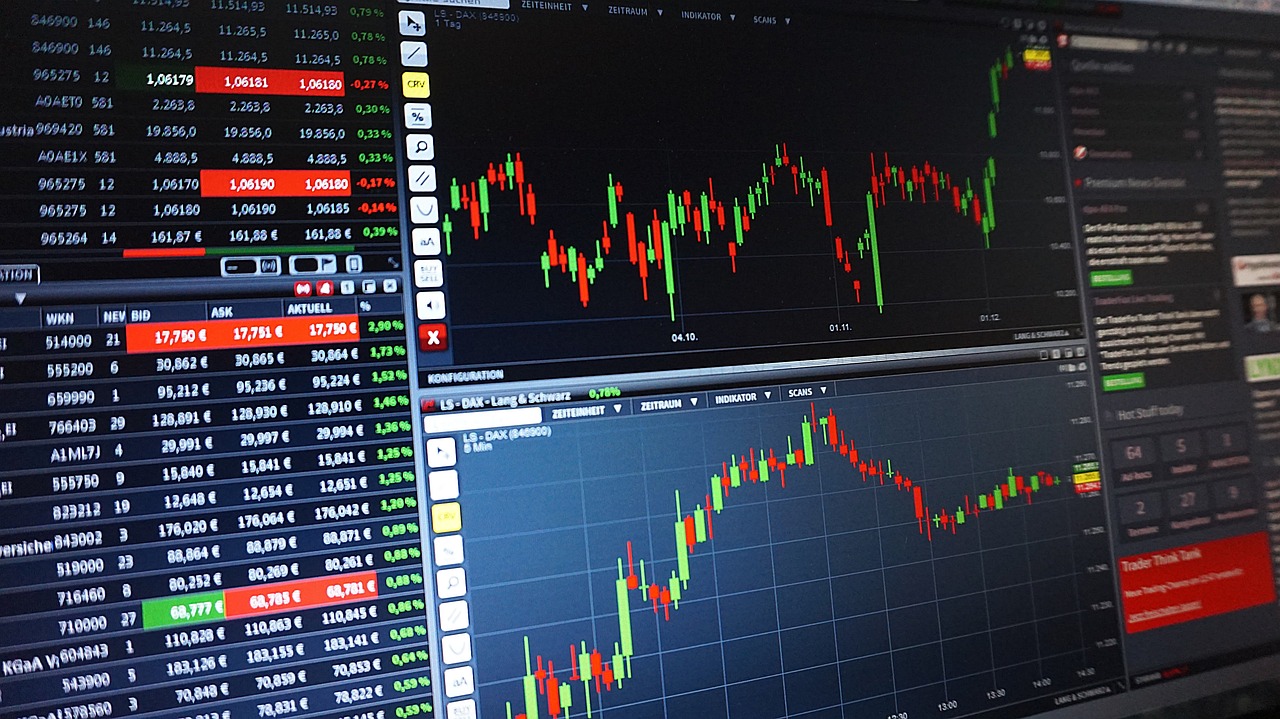
Identifying Drawdowns
When it comes to trading, drawdowns are like those unexpected potholes on a smooth road. They can catch you off guard, causing significant emotional and financial strain. A drawdown refers to the decline in the value of a trading account from its peak to its lowest point before a new peak is reached. It's essential to identify these drawdowns during the backtesting process because they provide critical insights into the risk profile of a trading strategy.
Think of backtesting as a time machine for your trading strategy. By analyzing historical data, you can see how your strategy would have performed during various market conditions, including those turbulent periods that led to drawdowns. For instance, if your strategy shows a drawdown of 20% during a market downturn, it’s a clear indicator that you may need to rethink your approach. Understanding the magnitude and frequency of these drawdowns can help you prepare better for future market fluctuations.
To illustrate this, let’s consider a hypothetical scenario. Imagine you have a trading strategy that has performed well over the past year. However, upon backtesting, you discover that it experienced a 30% drawdown during a significant market crash. This information is crucial. It not only highlights the potential risks but also allows you to devise strategies to mitigate such losses in the future.
Here’s a simple table to summarize the key aspects of identifying drawdowns:
| Aspect | Description |
|---|---|
| Peak Value | The highest value of your trading account before a decline. |
| Lowest Value | The lowest value reached during the drawdown period. |
| Drawdown Percentage | Calculated as (Peak Value - Lowest Value) / Peak Value * 100. |
| Duration | The time taken for the account to recover from the drawdown. |
By identifying and understanding drawdowns, you can enhance your emotional resilience. Knowing that you've faced similar situations before can help you stay calm and collected when the market turns against you. Moreover, this knowledge empowers you to implement better risk management strategies, such as setting stop-loss orders or adjusting your position sizes to safeguard your capital.
In conclusion, identifying drawdowns is a fundamental aspect of backtesting that every trader should take seriously. It’s not just about the profits; it’s about understanding the risks involved and preparing for the unexpected. After all, in the world of trading, it’s not if a drawdown will occur, but rather when it will happen. Equip yourself with the knowledge gained from backtesting, and you’ll be better prepared to navigate the often unpredictable waters of the financial markets.
- What is a drawdown? A drawdown is the reduction in the value of a trading account from its peak to its lowest point before a new peak is reached.
- Why is backtesting important for identifying drawdowns? Backtesting allows traders to analyze historical performance, including periods of drawdown, helping them understand potential risks and prepare for future market fluctuations.
- How can I mitigate drawdowns in my trading strategy? You can mitigate drawdowns by employing effective risk management techniques, such as using stop-loss orders and adjusting position sizes based on historical drawdown data.
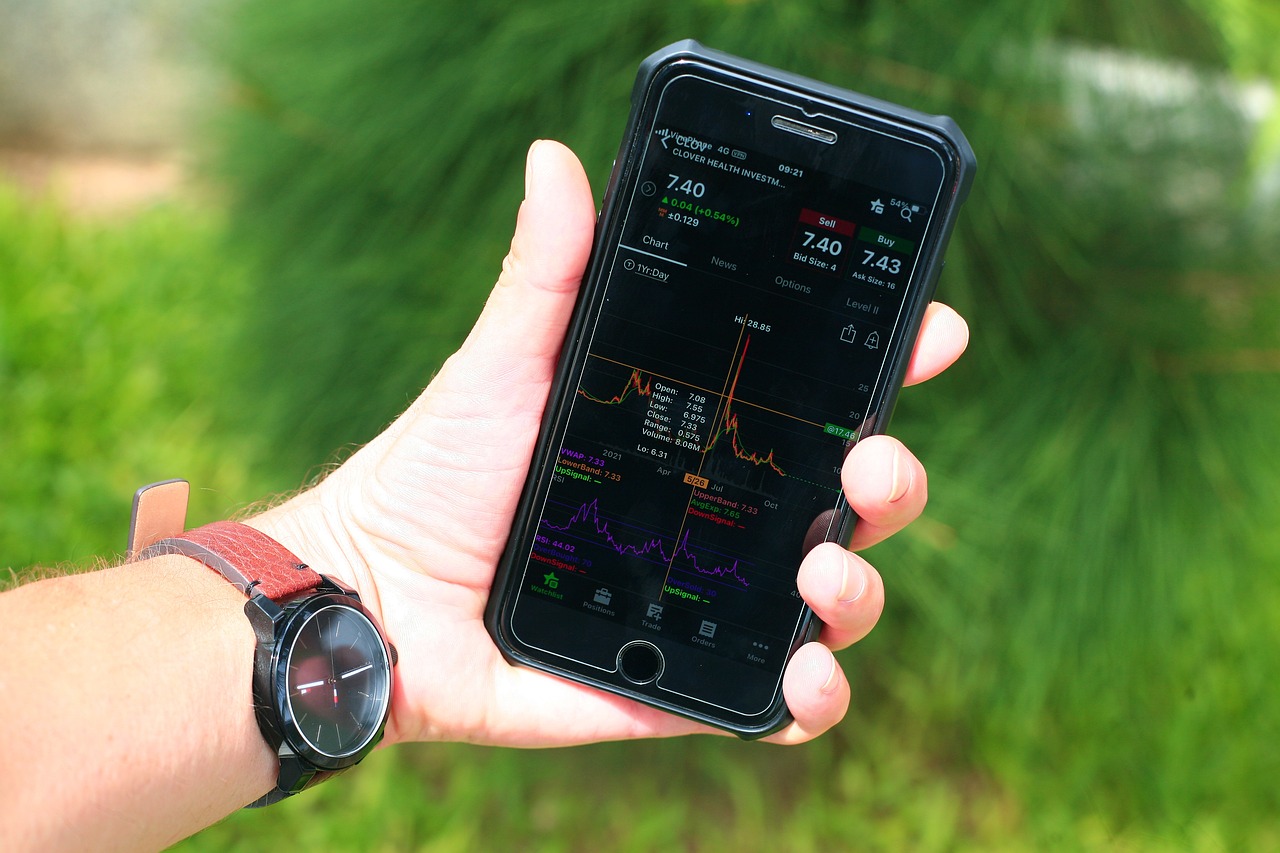
Position Sizing
Position sizing is a critical component of successful trading that goes hand in hand with backtesting. It refers to determining the amount of capital to allocate to a particular trade based on various factors, including risk tolerance, account size, and the specific characteristics of the trading strategy. Imagine you're a chef preparing a meal; just as the right amount of each ingredient is crucial for flavor, the right position size is essential for managing risk and maximizing returns in trading.
Through backtesting, traders can analyze how different position sizes would have impacted their overall performance in past market conditions. This analysis can reveal valuable insights, such as:
- Optimal Position Sizes: Identifying the size that would have yielded the best returns without exposing the trader to excessive risk.
- Risk-to-Reward Ratios: Understanding how different position sizes affect the potential profit versus potential loss on trades.
- Impact of Volatility: Learning how to adjust position sizes based on the volatility of the asset being traded.
For example, let's say a trader backtests a strategy and finds that a position size of 5% of their total capital leads to consistent profits over a year. However, if they were to increase their position size to 10%, they might experience larger drawdowns due to increased exposure to market fluctuations. This understanding is vital; it helps traders maintain a balance between aggressive trading and prudent risk management.
Moreover, position sizing isn't just a one-size-fits-all approach. Factors such as market conditions, personal risk tolerance, and trading goals can all influence the ideal position size. A trader might decide to adjust their position size based on whether they are trading in a trending market or a choppy one. By continuously refining their position sizing strategy through backtesting, traders can enhance their overall trading performance and confidence.
In conclusion, effective position sizing informed by backtesting is not merely a technical aspect of trading; it's a fundamental skill that can make the difference between success and failure. By understanding how to size positions appropriately, traders can navigate the often turbulent waters of the financial markets with greater assurance.
- What is position sizing, and why is it important?
Position sizing is the process of determining how much capital to risk on a trade. It is crucial because it helps manage risk and optimize potential returns. - How can backtesting help with position sizing?
Backtesting allows traders to analyze historical data to see how different position sizes would have affected their trading performance, helping them make informed decisions. - What factors should I consider when determining position size?
Consider your overall account size, risk tolerance, market conditions, and the specific characteristics of your trading strategy. - Can position sizing change over time?
Yes, position sizing should be adjusted based on evolving market conditions, personal experience, and changes in risk tolerance.

Strategy Optimization
When it comes to trading, is like tuning a musical instrument; it's all about finding that perfect harmony between various elements to achieve the best performance. Through backtesting, traders can refine their strategies by adjusting different parameters and rules based on historical performance. This process is not just about making minor tweaks; it's about understanding what worked, what didn’t, and why.
Imagine you’re a chef experimenting with a new recipe. You taste it, and maybe it’s too salty, so you adjust the seasoning. Similarly, in trading, backtesting allows you to taste your strategy with historical data, giving you insights into how it would have performed under different market conditions. You can play around with entry and exit points, stop-loss levels, and even the types of assets you're trading. The goal here is to create a strategy that not only performs well on paper but also stands the test of time in live markets.
One of the key aspects of strategy optimization is the iterative process. It’s not a one-and-done deal. You go back, analyze the results, and then make further adjustments. This cycle can be likened to a sculptor chiseling away at a block of marble, revealing a beautiful statue beneath. Each iteration brings you closer to a robust strategy that can adapt to changing market conditions.
However, it’s essential to approach this optimization with a level head. It’s tempting to chase after the perfect strategy that fits every historical data set perfectly, but this can lead to overfitting, where the strategy becomes too tailored to past data and fails in real-time trading. Instead, aim for a balance where your strategy is flexible enough to adapt but grounded in solid historical performance.
In terms of practical application, traders often utilize various tools and software for backtesting that allow them to visualize their strategies. For instance, many platforms offer features where you can run simulations and see how different parameters affect your results. Below is a simple table illustrating some common parameters traders might optimize during backtesting:
| Parameter | Description | Impact on Strategy |
|---|---|---|
| Entry Point | The specific price level at which a trade is initiated. | Affects the potential profit and loss of trades. |
| Exit Point | The price level at which a trade is closed. | Determines the realization of profits or losses. |
| Stop-Loss Level | The price point at which a position is exited to prevent further losses. | Crucial for risk management and protecting capital. |
| Position Size | The amount of capital allocated to a single trade. | Influences overall risk exposure and potential returns. |
Ultimately, strategy optimization through backtesting is a powerful tool in a trader's arsenal. By continually refining your approach based on data-driven insights, you can increase your chances of success in the unpredictable world of trading. So, roll up your sleeves and get ready to dive deep into your trading strategies, because the more you understand your past, the better prepared you’ll be for your trading future.
- What is backtesting? Backtesting is the process of testing a trading strategy using historical data to evaluate its potential effectiveness.
- Why is strategy optimization important? It helps traders refine their strategies, improving performance and adaptability in real market conditions.
- What are common mistakes in backtesting? Common mistakes include overfitting strategies to historical data and ignoring transaction costs.
- How can I avoid overfitting? Focus on creating adaptable strategies and validate them across multiple market conditions.
- Can backtesting guarantee future success? While backtesting can provide valuable insights, it cannot guarantee future performance due to the unpredictable nature of markets.

Common Backtesting Mistakes
Even the most seasoned traders can stumble when it comes to backtesting their strategies. It’s like preparing for a big game: you can practice all you want, but if you don’t recognize the common pitfalls, you might find yourself unprepared when it matters most. One of the primary mistakes traders make is overfitting. This occurs when a trading strategy is excessively tailored to historical data, making it look fantastic on paper but ultimately leading to dismal performance in the real world. Think of it like trying to fit into your favorite pair of jeans from high school; just because they fit perfectly back then doesn’t mean they’ll work for you now!
Another common mistake is ignoring market conditions. Markets are dynamic and can change dramatically over time. A strategy that worked well during a bull market may flounder in a bear market. It’s crucial to consider varying market environments when backtesting. For instance, if your strategy was developed during a period of low volatility, it might not hold up when the market becomes turbulent. Traders should evaluate their strategies against different market conditions to ensure they remain effective across various scenarios.
Additionally, many traders overlook transaction costs during backtesting. It’s easy to get caught up in the excitement of potential profits without considering the fees associated with trading. These costs can eat into your returns, and failing to account for them can lead to an inflated sense of a strategy's profitability. To illustrate, let’s consider a simple table below that outlines potential returns versus costs:
| Scenario | Potential Profit | Transaction Costs | Net Profit |
|---|---|---|---|
| Scenario A | $1,000 | $100 | $900 |
| Scenario B | $500 | $50 | $450 |
| Scenario C | $2,000 | $200 | $1,800 |
As you can see, transaction costs can significantly impact your overall profit. It’s essential to incorporate these costs into your backtesting framework to get a realistic view of your strategy’s performance.
Lastly, many traders tend to neglect the importance of sample size. A small sample size can lead to skewed results, making a strategy appear more successful than it truly is. Just like trying to predict the weather based on a single sunny day, relying on limited data can lead to poor decision-making. A larger sample size provides a more comprehensive view of how a strategy might perform under various conditions, leading to better-informed trading decisions.
In conclusion, avoiding these common backtesting mistakes is vital for any trader looking to refine their strategies. By being aware of overfitting, considering market conditions, accounting for transaction costs, and ensuring a sufficient sample size, traders can craft strategies that not only look good on paper but also perform well in the real world.
- What is backtesting? Backtesting is the process of testing a trading strategy using historical data to evaluate its potential effectiveness.
- Why is overfitting a problem? Overfitting makes a strategy too tailored to past data, resulting in poor performance in live markets.
- How can I account for transaction costs in backtesting? Include transaction fees in your calculations when assessing the potential profitability of your trading strategy.
- What should I consider regarding market conditions? Ensure your strategy is tested across various market environments to confirm its robustness.

Overfitting Strategies
Overfitting is a common pitfall that many traders encounter when developing their trading strategies. Essentially, it occurs when a strategy is excessively tailored to historical data, making it perform exceptionally well in backtests but poorly in real-world trading conditions. Imagine trying to fit a square peg into a round hole; that's what overfitting does to your trading strategy. It's like creating a beautiful painting that only looks good in a specific light but falls flat in the real world.
When traders overfit their strategies, they might think they have found the holy grail of trading. However, this illusion can lead to significant losses when market conditions change. To illustrate this point, consider the following key aspects of overfitting:
- Complexity vs. Simplicity: A more complex strategy with numerous parameters may seem appealing, but it often fails to adapt to new data. Simplicity often prevails in the unpredictable world of trading.
- Historical Fit: A strategy that perfectly aligns with past data may not necessarily predict future movements. Markets evolve, and what worked yesterday might not work tomorrow.
- Validation Techniques: Using a separate validation dataset can help assess whether a strategy is genuinely robust or merely a product of overfitting.
To avoid falling into the overfitting trap, traders should focus on developing strategies that are flexible and can adapt to changing market conditions. This means regularly reviewing and adjusting parameters based on new data rather than solely relying on historical performance. After all, the market is like a living organism, constantly changing and evolving. If your strategy is rigid, it will struggle to keep up.
Moreover, employing techniques such as cross-validation can help traders evaluate their strategies more effectively. By dividing historical data into training and testing sets, traders can assess how well their strategies perform on unseen data. This approach not only helps in identifying overfitting but also enhances overall strategy robustness.
In conclusion, while the allure of a perfectly fitting trading strategy can be tempting, it's crucial to remember that overfitting can lead to disastrous consequences. By focusing on simplicity, adaptability, and proper validation, traders can create strategies that stand the test of time, ultimately leading to greater success in the financial markets.
Q: What is overfitting in trading strategies?
A: Overfitting occurs when a trading strategy is too closely tailored to historical data, resulting in poor performance in real market conditions.
Q: How can I avoid overfitting?
A: To avoid overfitting, focus on creating simpler, more adaptable strategies and use validation techniques like cross-validation to test performance on unseen data.
Q: Why is backtesting important?
A: Backtesting allows traders to evaluate the effectiveness of their strategies using historical data, helping them make informed decisions and minimize risks.
Q: What are drawdowns?
A: Drawdowns refer to periods of loss in a trading strategy, which can be identified through backtesting to prepare for similar situations in the future.

Ignoring Market Conditions
When it comes to backtesting trading strategies, one of the most critical yet often overlooked aspects is the market conditions during the testing period. Traders can easily fall into the trap of believing that past performance guarantees future success, but this is a dangerous assumption. The financial markets are influenced by a multitude of factors, including economic indicators, geopolitical events, and even market sentiment. Each of these factors can create unique conditions that affect how a trading strategy performs.
Imagine trying to predict the weather by only looking at last year’s forecasts. If last summer was exceptionally hot, you might expect the same this year. However, what if a sudden cold front sweeps through? Similarly, a strategy that thrived during a bullish market may flop when the market turns bearish. This is why it’s essential to consider the context in which your backtesting data was generated.
To effectively backtest a strategy, traders should analyze different market environments. This includes:
- Bull Markets: Periods characterized by rising prices and investor optimism.
- Bear Markets: Times when prices are falling, often leading to widespread fear and panic.
- Sideways Markets: Conditions where prices move within a narrow range, creating uncertainty.
By incorporating a variety of market conditions into backtesting, traders can better understand how their strategies might perform in real-world scenarios. For instance, a strategy that worked well in a bull market might need adjustments to adapt to a bear market. This adaptability is crucial for long-term success.
Moreover, it’s vital to not only consider different market phases but also to account for changing volatility. High volatility can lead to sudden price swings, while low volatility might result in stagnant price movements. A strategy that doesn’t account for these fluctuations could end up being ineffective when applied in a live trading environment.
In conclusion, ignoring market conditions during backtesting is like sailing a ship without checking the weather. You might set out with confidence, but if you encounter a storm, you could find yourself in deep trouble. Always remember to analyze your strategies across various market conditions to ensure they remain robust and adaptable. This foresight can make all the difference between a successful trading endeavor and a costly mistake.
1. What is backtesting in trading?
Backtesting is the process of testing a trading strategy using historical data to evaluate its potential effectiveness.
2. Why is it important to consider market conditions in backtesting?
Market conditions can significantly influence a strategy's performance. Analyzing various conditions helps ensure the strategy remains effective in different environments.
3. What are some common mistakes in backtesting?
Common mistakes include overfitting strategies to historical data and ignoring transaction costs or market conditions.
4. How can I improve my backtesting process?
To improve your backtesting, consider using a diverse dataset, incorporate different market conditions, and be mindful of transaction costs.

Integrating Backtesting with Live Trading
Transitioning from backtesting to live trading is a significant leap that many traders find daunting. It's like moving from the safety of a practice field to the unpredictable arena of a real game. While backtesting provides valuable insights based on historical data, live trading introduces a myriad of variables that can affect performance. Understanding these differences is crucial for successful implementation.
One of the first steps in this transition is to recognize the limitations of backtesting. Historical data might show a strategy performing excellently, but market conditions can change rapidly. For instance, a strategy that worked well during a bull market may falter in a bear market. This is why it’s essential to incorporate a variety of market conditions during backtesting to ensure that your strategy is robust enough to handle different scenarios.
Moreover, traders should consider the psychological aspects of live trading. Backtesting allows you to simulate trades without emotional involvement, but real trading comes with the pressure of financial stakes. The thrill of seeing profits can lead to impulsive decisions, while the fear of losses can result in hesitation. To mitigate these psychological impacts, it’s advisable to start live trading with a demo account or a small amount of capital. This way, you can gain experience without exposing yourself to significant risk.
Another critical factor in integrating backtesting with live trading is transaction costs. In backtesting, traders often overlook fees, slippage, and other costs that can erode profits in real trading. It's vital to include these costs in your backtesting model to get a more accurate picture of your strategy's potential performance. For example, if your backtest shows a 10% return, but transaction costs amount to 3%, your actual return may only be 7%. This reality check can help you adjust your expectations and strategy accordingly.
To summarize, integrating backtesting with live trading involves:
- Recognizing the limitations of historical data.
- Understanding the psychological pressures of real trading.
- Incorporating transaction costs into your strategy evaluation.
By taking these factors into account, traders can make a smoother transition from backtesting to live trading, ultimately enhancing their chances of success in the financial markets. Remember, the journey doesn’t end with backtesting; it’s just the beginning of a new, exciting chapter in your trading career!
Q1: What is backtesting in trading?
A1: Backtesting is the process of testing a trading strategy using historical data to evaluate its effectiveness and performance before applying it in real-time trading.
Q2: Why is backtesting important?
A2: Backtesting allows traders to assess potential risks, validate performance, and optimize strategies based on past market behavior, which can lead to more informed decision-making.
Q3: What are common mistakes in backtesting?
A3: Common mistakes include overfitting strategies to historical data, ignoring transaction costs, and failing to account for changing market conditions.
Q4: How can I prepare for live trading after backtesting?
A4: Start with a demo account to practice live trading without financial risk, incorporate transaction costs into your strategy, and be mindful of the psychological aspects of trading.
Frequently Asked Questions
- What is backtesting in trading?
Backtesting is the process of evaluating a trading strategy using historical market data. By simulating trades based on past performance, traders can assess how well a strategy would have worked in different market conditions.
- Why is backtesting important?
Backtesting is crucial because it helps traders identify the potential effectiveness of their strategies before risking real money. It allows for performance validation, risk assessment, and strategy optimization, which can significantly enhance trading success.
- What are some common mistakes in backtesting?
Common mistakes include overfitting, where a strategy is too tailored to past data, and ignoring transaction costs. Additionally, failing to account for changing market conditions can lead to misleading results.
- How does backtesting help with risk management?
Backtesting aids in risk management by revealing potential drawdowns and losses associated with a strategy. Understanding these risks enables traders to implement better protective measures, enhancing their overall investment strategy.
- Can backtesting guarantee future success?
No, backtesting cannot guarantee future success as market conditions can change. However, it provides valuable insights and helps traders make informed decisions based on historical performance.
- What is overfitting in backtesting?
Overfitting occurs when a trading strategy is overly customized to historical data, resulting in poor performance in live markets. It’s essential to create adaptable strategies that can perform well under various conditions.
- How can I integrate backtesting with live trading?
Integrating backtesting with live trading requires careful planning. Traders should understand the differences between historical data and real market conditions and ensure their strategies are flexible enough to adapt to these changes.
- What role does position sizing play in backtesting?
Position sizing is critical in backtesting as it helps traders analyze how different trade sizes would have impacted their overall performance. This analysis is vital for managing risk and optimizing potential returns.




